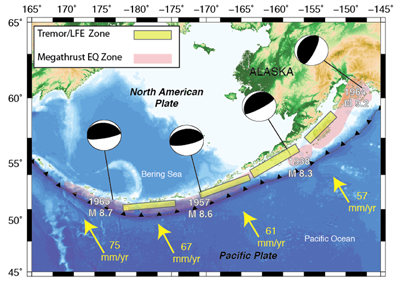Tectonic Tremor Activity and Megathrust Earthquakes in Subduction Zones:
Are they correlated?
By:
Justin Brown
Stanford University
| When: | Friday, Oct. 14, 2011, 10:30 a.m. to 11:30 a.m. Join us for coffee beginning at 10:00 a.m. |
| Where: | Seminar Conference Room, 10100 Burnet Road, Bldg 196-ROC, Austin, Texas 78758 |
| Host: | Gail Christeson, UTIG |

Abstract
Since the discovery of deep non-volcanic tremor ten years ago the conventional understanding of fault slip behavior is more enigmatic- particularly in subduction zones. Tectonic, or 'non-volcanic', tremor is a low amplitude, low frequency, long duration seismic signal often accompanied with slow slip originating from the plate interface.
In this talk, I demonstrate that tectonic tremor from six circum-Pacific subduction zones is comprised of several repeating low frequency earthquakes (LFEs) on the plate interface. The depths of the LFEs are concentrated at the down-dip extent of previous megathrust (M 8+) earthquakes and in some cases exhibit repeating patterns along strike and along dip.
In some subduction zones the tremor/LFE activity is episodic. For the Alaska-Aleutian subduction zone, LFEs delimit the down-dip extent of megathrust earthquakes throughout the entire arc suggesting a mechanical relationship between the two phenomena.




